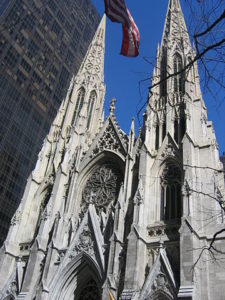Catholicism was a major force in Irish culture and subsequently Irish-American culture. Some aspects of Catholicism that are particularly relevant to the formation of Irish-American identity are:
The emphasis on the family, which was considered the “social and moral

center of the community” (McKenzie). The family was the patriarchal family structure in which the father is at the top of the hierarchy within the family (McKenzie). This results in women be made subservient to men as well. Children were also viewed as the primary purpose and goal of marriage, so using birth control is not allowed (McKenzie).
The ban on homosexuality, within Catholicism, homosexuality was considered an “objective disorder” and that homosexual behavior was “sinful” (McKenzie). This led to the Catholic church opposing same-sex marriage (McKenzie). In addition to that as previously mentioned in Catholicism, the purpose of the family structure was to produce children so any sexual practice that would not result in children and was considered outside the norm was frowned upon, and homosexuality fits into that category.
Works Cited
McKenzie, John L, Martin E. Marty and Others. “Roman Catholicism.” Encyclopaedia Britannica. Last updated December 11, 2018. https://www.britannica.com/topic/Roman-Catholicism.
Picture Source
“Saint Patrick Front1.” Wikimedia Commons. Last updated December 9, 2011. https://commons.wikimedia.org/wiki/File:Saint_Patrick_front1.jpg



 The parade and the general celebration of St. Patrick’s day was used as a way to celebrate Irish-American identity. At one point it was even the most popular ethnic celebration in America and helped develop
The parade and the general celebration of St. Patrick’s day was used as a way to celebrate Irish-American identity. At one point it was even the most popular ethnic celebration in America and helped develop 